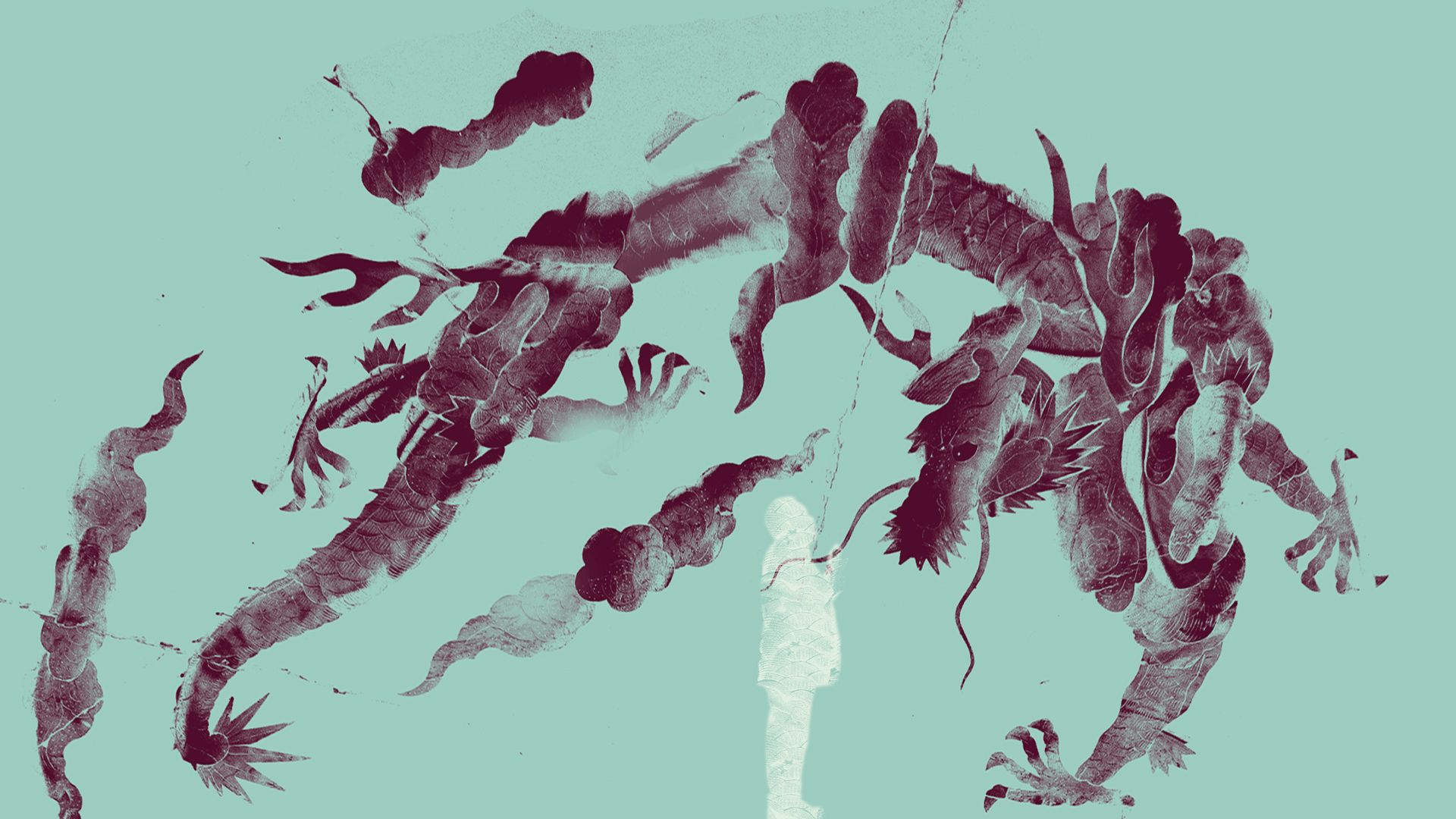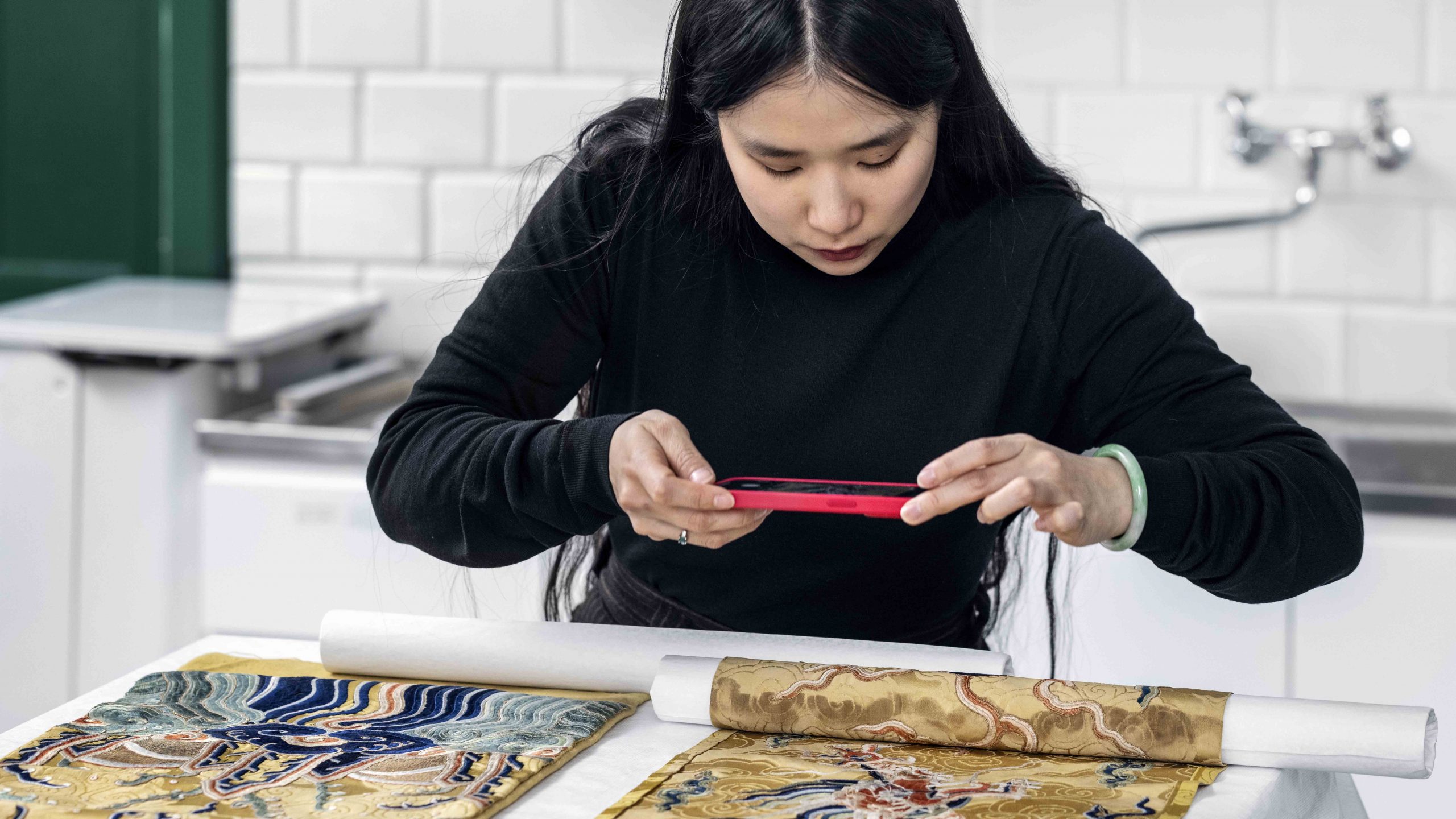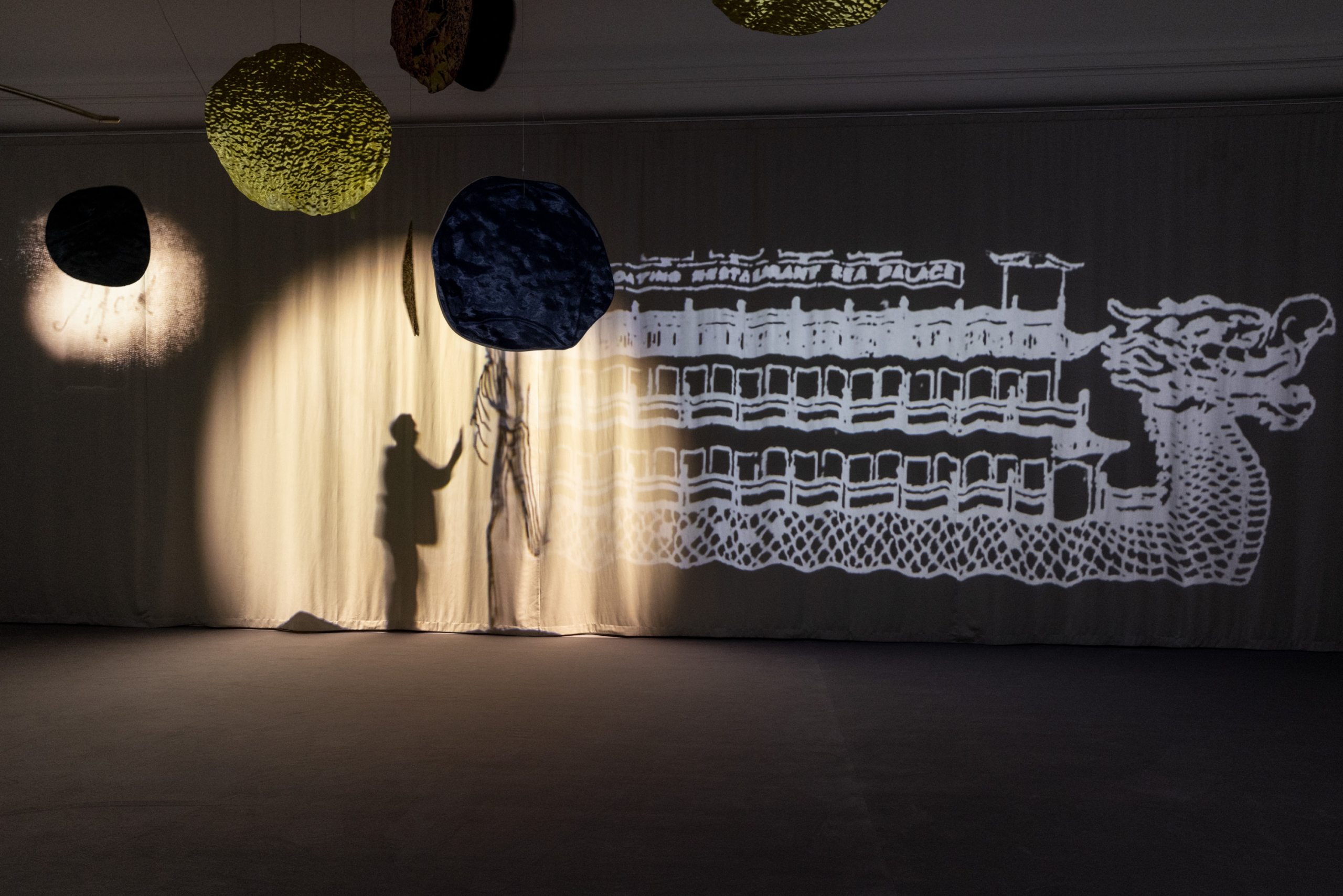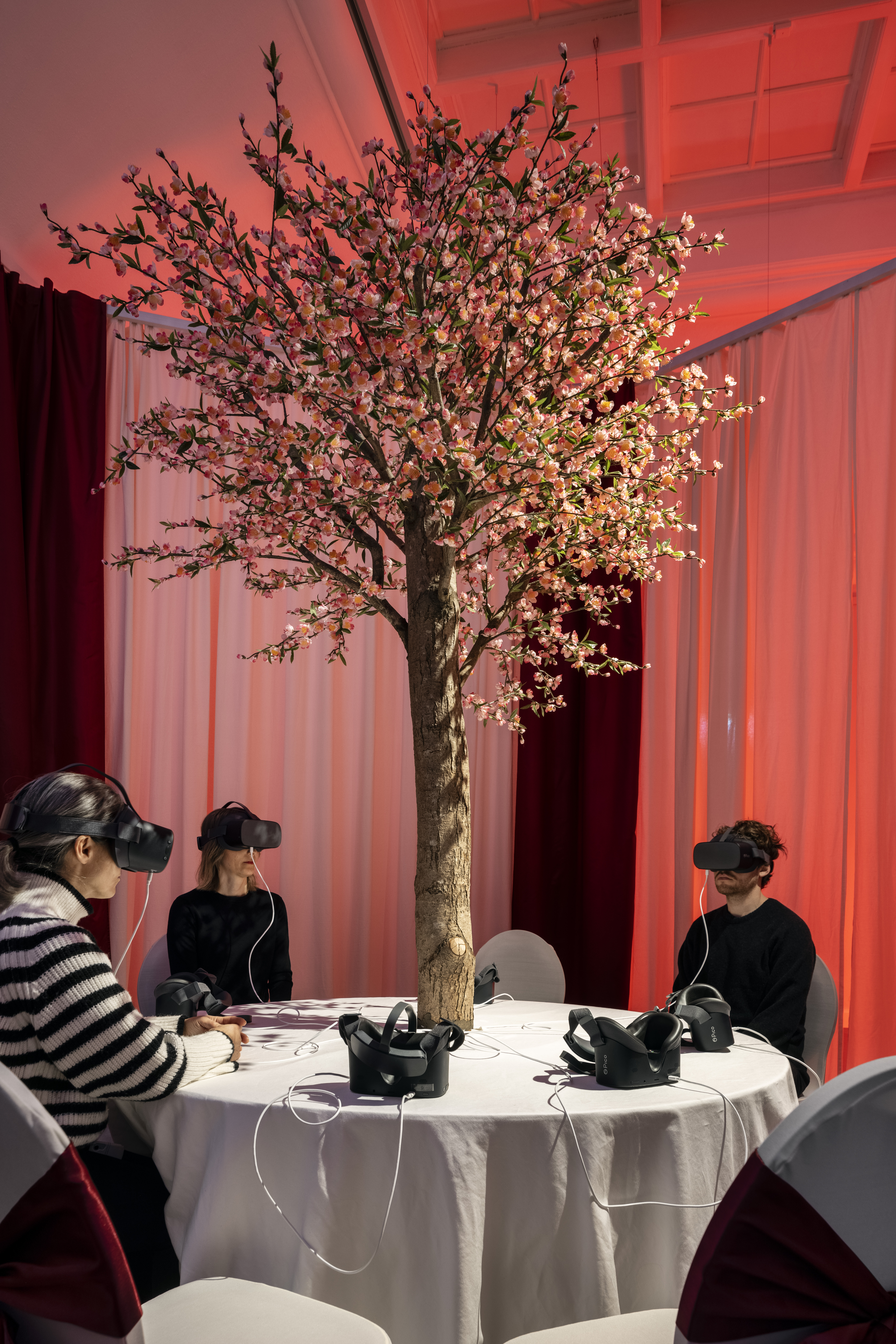Previous Exhibition
Lap-See Lam: Raining dragon scales
Shadow puppets, sculptures and music take us on a journey through time and space. In November 2022 we opened the solo exhibition Raining Dragon Scales, with artist Lap-See Lam.
Shadow puppets, sculptures and music take us on a journey through time and space. In November 2022 we opened the solo exhibition Raining Dragon Scales, with artist Lap-See Lam.

Lap-See Lam grew up in a building in which her parents and grandmother ran a Chinese Restaurant. With her own background and the cultural exchange between China and Europe as a starting point, the artist creates works of autofiction. What happens to information as it is handed from one generation to another, or one place and another, and how does that relate to design?
Through the use of digital design tools, Lam reimagines environments, interiors and artefacts that exist in the no man’s between East and West in artistic installations.
The exhibition featured the Virtual Reality piece, Phantom Banquet (2020) and the shadow puppet play Dreamers’ Quay (2022) in separate galleries. The middle gallery concentrates on the research and design process behind the new sculpture Raining Dragon Scales (2022).
Lap-See Lam: Raining Dragon Scales opened on 26 November 2022 and run until 26 March 2023.

The middle gallery showcased the design process behind the new sculpture Raining Dragon Scales (2022). With the dragon symbol as it’s starting point, Lam has 3D-scanned four objects from the museum’s collection that bear witness to the design history between China and Europe. The objects’ dragon motifs have then been subjected to a design and production process to become dragon scales on a mobile that is displayed in the neighbouring gallery.
In the piece Dreamers’ Quay (2022), visitors follow teenager A’Yan through a time-travel portal. Via a large-scale shadow puppet play, we are transported back in time, from a 1970s Swedish Chinese Restaurant to the eighteenth century. We meet characters who were first introduced in the artist’s summer radio appearance as The Singing Chef, Prince Gustaf, and the first recoded Chinese person in Sweden, Afock. Some of the inspiration comes from the eighteenth century shadow puppetry that was sometimes called ’ombres chinoises’ – Chinese shadows. This particular play, however, consists of several channels of video projection, based on 3D scans of Chinese palaces, dragon boats and a number of Chinese restaurants in Sweden.


An ongoing project for Lap-See Lam is documenting the design history of Swedish Chinese restaurants. Their aesthetics follow a similar journey to the artists’ own family. The restaurants were red, green or golden yellow, decorated with ridge turrets, tang horses and guardian lions, with interiors of panelled walls and mirrors. They lived up to the customers’ notions of China. But elements shift as they are transferred between different generations and cultures? The Installation Phantom Banquet is set in a restaurant, where the tables have been laid with VR goggles. The films shown in the goggles are based on 3D scans of New Peking City.
Top image 1: Lap:see Lam: Raining Dragon Scales, graphic design: Thomas Bush. Picture 1: 3D scan of objects for Raining Dragon Scales (2022), Röhsska Museum. Photo: Carl Ander. Image 2: Drömmarnas kaj (2022). Producer: Bonniers Konsthall. Owner: Lap-See Lam/Galerie Nordenhake. Photo: Carl Ander. Image 3: Phantom Banquet. Producer: Performa. Owner: Lap-See Lam/Galerie Nordenhake. Photo: Carl Ander.